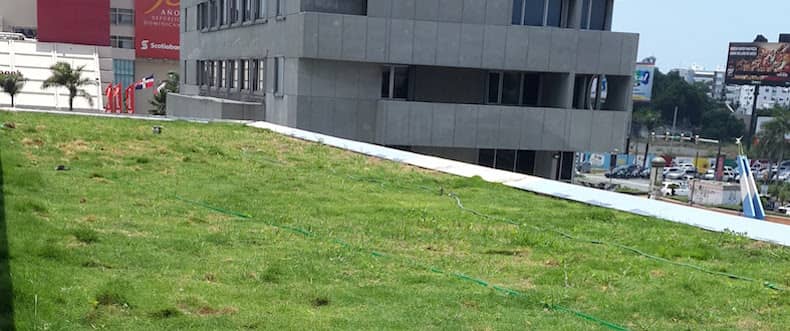Environmental experts say 2017 will be a year of exciting change and development in the sustainable roofing industry. More than ever, roofing manufacturers and building owners are looking to decrease their carbon footprint, reduce waste and harmful emissions and ultimately, save money in the long-run. In the roofing industry, these cost-saving, energy-efficient roofing systems are referred to as “cool” or “warm.” Traditional sustainable roofs market themselves based on pigmentation: “white” to reflect the sun, “black” to absorb heat and “blue” to capture and store water. Today, much of this has changed as manufacturers are altering coating formulas and the chemical makeup of the membranes to be more eco-friendly. Other than the membrane itself, sustainability processes can originate in the manufacturing and fabrication stages and trickle down all the way to final product installation. This is, however, independent of a manufacturer’s business model and operational processes.
Sustainable roofing can have many beneficial long-term effects for a facility and its surrounding community. Recent studies conducted by the Environmental Protection Agency show that “cool” and “green” roofs will be the highest standard of energy efficiency in 2017: “cool” are coated in a reflective material to eliminate heat buildup and “green” are vegetated. Hybrid roofs, which are a new concept and not yet available, are both reflective and vegetated. They’re constructed using light-colored plants that have higher reflectivity similar to cool roofs, but they also provide the advantages of green roofs, such as water retention.
Roofing material waste accounts for 5 percent of all solid waste generated annually in the United States. It’s important that manufacturers are aware of their domestic contribution to waste and are encouraged to establish waste management processes. Investing in a quality, high-performing roofing system with a longer lifespan can keep roofing materials out of landfills and reduce environmental impact in the long run.
Eco Building Pulse, a publication of the American Institute of Architects, states there are many ways roofing manufacturers and contractors can make a roofing system sustainable, including:
- Roof-mounted solar tubes that supply over half of a building's lighting requirements
- Roof-mounted solar panels for supplemental building power
- A comprehensive storm-water retention system to provide irrigation for a building site
- High-efficiency roof insulation to minimize building heating and cooling requirements
- A high-performance roofing system designed to extend a building’s service life
- Rooftop classroom and meeting facilities to expand the usefulness of roof space
Sustainability goes beyond the color of a roof, but it’s a promise to reduce facility energy consumption, redefine manufacturing processes and ensure operational excellence. The future is bright for the roofing industry; learn more about choosing the Rite roofing system for your facility.
What is your experience with sustainable roofing? Tell us about it in the comments!
-1.png?width=500&height=271&name=FiberTite_Only%20(500px%20wide)-1.png)



-1.png)